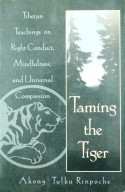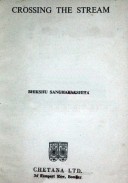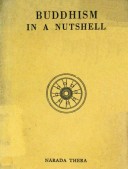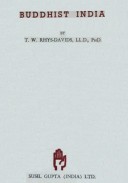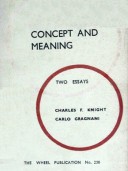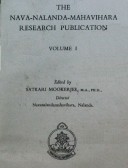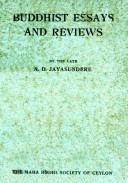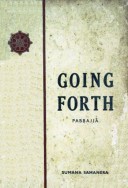Tìm Sách
Sách tiếng Anh-English >> Taming the Tiger
Thông tin tra cứu
- Tên sách : Taming the Tiger
- Tác giả : Akong Tulku Rinpoche
- Dịch giả :
- Ngôn ngữ : Anh
- Số trang : 196
- Nhà xuất bản : Inner Traditions-UK
- Năm xuất bản : 1995
- Phân loại : Sách tiếng Anh-English
- MCB : 1210000008183
- OPAC :
- Tóm tắt :
CONTENTS
Introduction……………………….1
Editor’s Preface……………………….3
Acknowledgements……………………….5
Taming the Tiger……………………….7
Precious Human Birth……………………….15
Impermanence……………………….21
The Right Motivation………………………. 27
Facing the Situation……………………….35
The Mirror……………………….41
Body, Speech and Mind……………………….47
Right Conduct……………………….53
Compassion……………………….61
Mindfulness……………………….73
The Exercises
Introduction……………………….84
Timetable……………………….97
- Posture……………………….101
- Relaxing……………………….108
- Feeling……………………….113
- The Golden Light of Universal Compassion……………………….117
- Rainbow……………………….121
- The Mirror……………………….130
- Friend……………………….135
- Awakening our Potential……………………….139
Progress So Far……………………….143
- Bringing that Potential to Life……………………….145
- Expanding and Contracting………………………150
- Enemy………………………154
12 -14. Taking Suffering………………………158
- Taking Suffering from Parents and Relatives………………………159
- Taking Suffering from Country, Friends and Animals………………………161
- Taking Suffering from Enemies………………………164
- The Rainbow Sphere………………………168
- Universal Compassion………………………179
- The Universe Transformed by Compassion………………………181
Afterword………………………187
Biography of the Second Akong Tulku………………………189
Appendix………………………192
INTRODUCTION
There is an almost endless number of books available nowadays that have been written by deeply spiritual people or edited from their lectures and teachings. With there already being so many precious jewels of wisdom, I do not really feel there to be a need for adding my own limited contribution. However, quite a few people have requested the publication of some of the advice I have tried to give in various centres over the last fifteen years, feeling that it might help my students and those whom I have been unable to meet at Kagyu Samyé Ling or the various Samyé Dzongs associated with me.
In response to their sincere requests, and in the hope that somewhere a little benefit may emerge, I have agreed to the publication of this book in which I have tried to share the limited knowledge I possess. I am a very immature person myself, without too much understanding, and know that the advice I can give will only be able to help those either as simple-minded as myself or those even worse off. I apologise to anyone reading these words who is very learned or spiritually pure, for surely they will find them lacking. However, if you are a beginner like me, then the benefit you will derive from these words, as you read and study, will probably depend a great deal upon the amount of effort you put into your learning and upon the degree of your motivation really to progress. I am sure that some of you will find a little help – some more, some less.
The real benefit is in the development of peace and mutual understanding – understanding of the world and of the people around us and of ourselves too. When there is that, then one’s wisdom is useful both for oneself and others. Its value will radiate out to one’s family, one’s society and even to whole nations.
The first section is based upon general advice for everyday life. It looks at the way in which we experience situations and difficulties. The second section gives ways of coping with these difficulties by the use of different mental exercises. How these latter should be classified I am not sure. They may be thought of, and used, as meditations, relaxation techniques for the body and mind, or as mental therapy. In themselves they carry no particular label. I am neither special nor learned and I do not have the power to solve everyone’s problems. Far from that, I am just like anyone else. I simply offer you these techniques as a friend.
We are often looking for a different world, a heaven somewhere on earth. But whether this, our life, becomes heaven or hell is something which finally depends entirely upon ourselves; upon what we are inside and upon our motives. It seems to me that the greatest need is for us to work simply and slowly, step by step, and for there to be a gradual progress towards better understanding. Then I think that heaven will appear in our lives and we will not need to yearn for it as a Shangri-la somewhere outside.
I hope that this book may help bring closer understanding between people and between nations. To that end I dedicate any wholesomeness and virtue it may produce.
Dr. Akong Tulku Rinpoche,
Kagyii Samyé Ling, April 1994.
EDITOR’s PREFACE
Those who have met Akong Rinpoche will be aware of his humility and know his humanity, his readiness to help, and also the very down-to-earth, compassionate nature of his teachings. His guiding instructions on the practice of Dharma, the teachings of Lord Buddha, apply to a whole range of people, from those with families, jobs and children right through to Buddhist monks and nuns. The clarity and simplicity of the teachings make them useful and available to everyone.
Trying to express the nature of his teachings just through the printed word is very difficult. So much of what he teaches is through his example to others. He always has stability and maintains a sense of space in whatever situation arises. His humour will often take the poison out of a situation when things become too heavy or too much of a ‘big deal’. Working with the advice and exercises that were put together to make this book has helped me a great deal. It’s very hard to do justice to his powerful and direct style of teaching and this book only hints at the depth and richness of his vast understanding. However, Rinpoche’s approach is that we should always do our best and be satisfied with that.
Taming the Tiger itself is edited from notes and tapes of Rinpoche’s lectures. It also contains original material that he has kindly added in the process of its development. No book is ever completely perfect but the best has been done to communicate Rinpoche’s guidance and instructions as faithfully and accurately as possible.
In the thirty years that Rinpoche has been living in the West, he has given teachings in Europe, America and South Africa. He has seen the kind of difficulties that Westerners face. The pressures, tensions and speed of modem living are not the best environment for relaxation or meditation. So the teachings in this book are given by Rinpoche out of the compassionate wish to help people in their everyday lives. The exercises will develop awareness and create a space whereby we can see our world more clearly and be relaxed and open to everything within and around us. This way we can go beyond the ego which is always trying to make its dreams into reality. Instead we can come to understand that our everyday reality is like a dream and not suffer so much.
Taming the Tiger arose from repeated requests, particularly from the ever-growing number of Rinpoche’s students who rarely have the opportunity to see him face to face, in order that he could make his teachings available to everyone who needs them. For his students, it is to refresh our memories and remind us of his advice. For others, it is an introduction to the reasons for training the mind and how to go about it. May it serve as an inspiration for everyone.
Clive Holmes
ACKNOWLEDGMENTS
We wish to express our gratitude to all who have contributed to the making of this book.
To Rob Naim of Kagyii Samyé Ling, whose original transcription of a therapy course taught by Akong Rinpoche in South Africa in 1983 served as a basis for the development of Part II.
To Colin Betts for re-writing the initial draft of this book.
To Vih Harris and Phil Johnson who contributed notes and insight to the development of the text.
To Bill Watson for editorial assistance, Hanna Hundorf and Wendy Swan for help with general editing.
To Hanna Hundorf and Ashley Mago-Tovar for helping with the’ production of this book.
To Hylda Bruyes for unstinting contribution to the courses in Edinburgh which were the main proving ground for the exercises.
To students of courses in many places in Britain, Europe, America and South Africa whose questions and responses to the contents of the book have helped to mould it into its present shape.
Clive Holmes
Edie Irwin
 Facebook
Facebook
 Google
Google
 Google+
Google+
